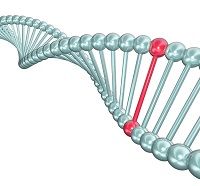Article
Study Highlights Genes Affecting Malaria Risk
Author(s):
A study published in The Lancet Haematology found the genetics of red blood cells cause some individuals to be more susceptible or resilient against malaria.

A study published in The Lancet Haematology found the genetics of red blood cells cause some individuals to be more susceptible or resilient against malaria.
For their study, researchers from the National Institute of Allergy and Infectious Diseases (NIAID), a division in the National Institutes of Health (NIH), identified 5 blood cell genetic variants in 1,586 Malian children aged 6 months to 17-years-old. From May 1, 2008, to Dec. 29, 2011, the team also followed-up with the children and found 4,091 malaria outcomes.
Documenting blood cell variants, the investigators reported the sickle cell trait (HbAS) was present in 220 (14%) children, haemoglobin C (HbC) heterozygosity (HbAC) in 103 (7%), 438 (28%) carried α thalassaemia, 621 (40%) had O type blood, and glucose-6-phosphate dehydrogenase (G6PD) deficiency 72 (9%) was witnessed in 767 boys and G6PD 158 (20%) in 776 girls.
Based on this breakdown, the team highlighted that children with the HbAS gene had a lower risk of contracting malaria than children carrying the HbAA gene (adjusted incidence rate ratio [aIRR] 0·66 [95% CI 0·59—0·75], p<0·0001).
The team also noted among children with a condition called homozygous X-linked glucose-6-phosphate dehydrogenase (G6PD) deficiency homozygous girls had a lower occurrence of malaria than in G6PD A+/A+ girls (0·51 [0·29—0·90], p=0·020). However, they reported that HbAC children had a higher risk than HbAA children (1·15 [1·01–1·32], p=0·039)
Furthermore, the researchers discovered among children infected with malaria, the parasite levels were less present in HbAS children (median 10 550 parasites per μL [IQR 1350—26 250]) than iHbAA children (15 150 parasites per μL [4250–31 050]; p=0·0004).
While HbAS carriers have 1 defective gene that affects hemoglobin production, someone with sickle-cell disease has 2, a NIAID news release explained. Moreover, the investigators found the reduced malaria risk for HbAs carriers was highest in early childhood.
Based on their discovery, the writers claimed their study highlights potential malaria drugs and vaccines, the NIAID news release also mentioned.
“The individual and interactive effects of HbAS, HbAC, and G6PD A—/A– genotypes on malaria risk and parasite density define clinical and cellular correlates of protection. Further identification of the molecular mechanisms of these protective effects might uncover new targets for intervention,” the authors concluded.


